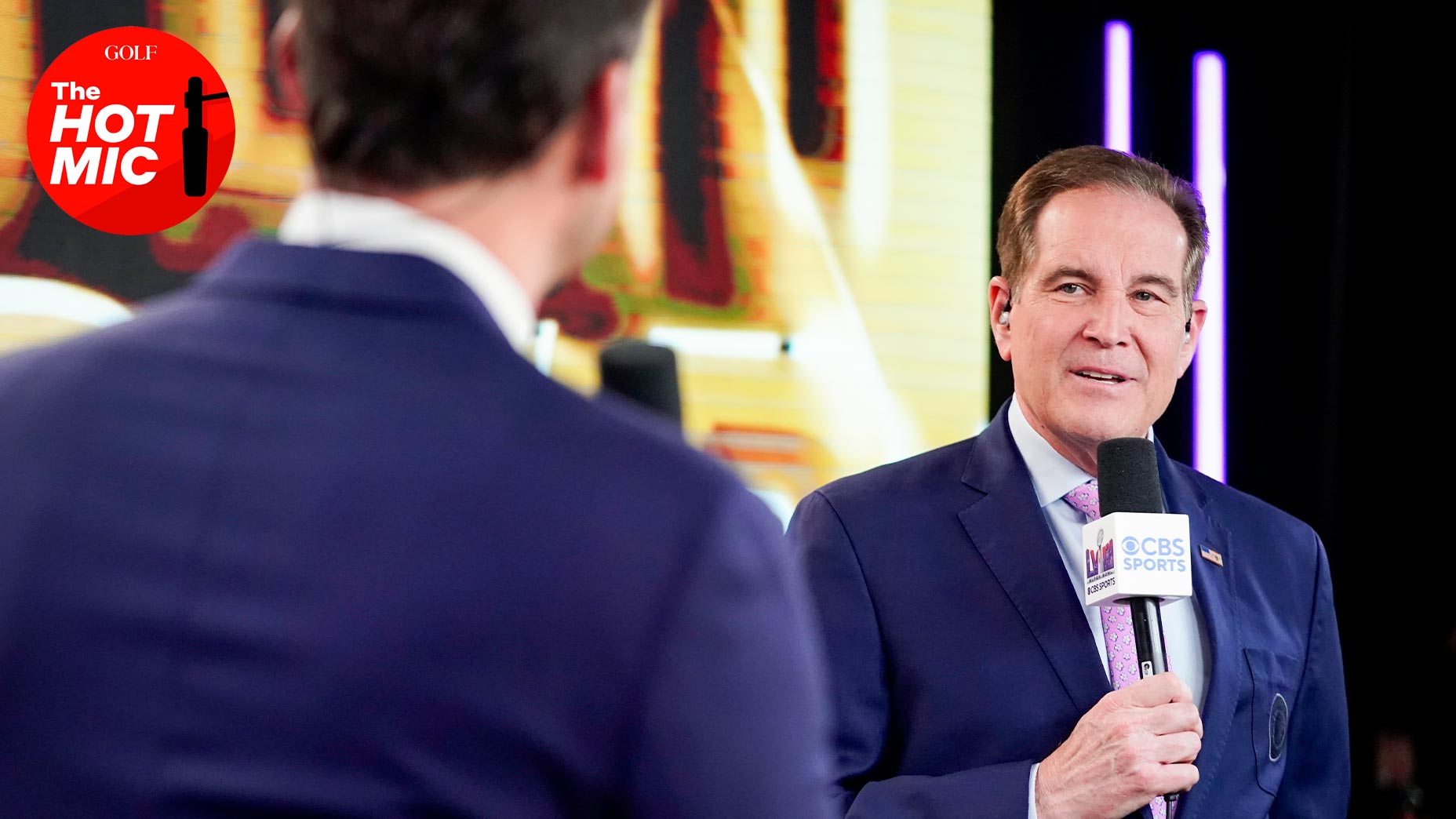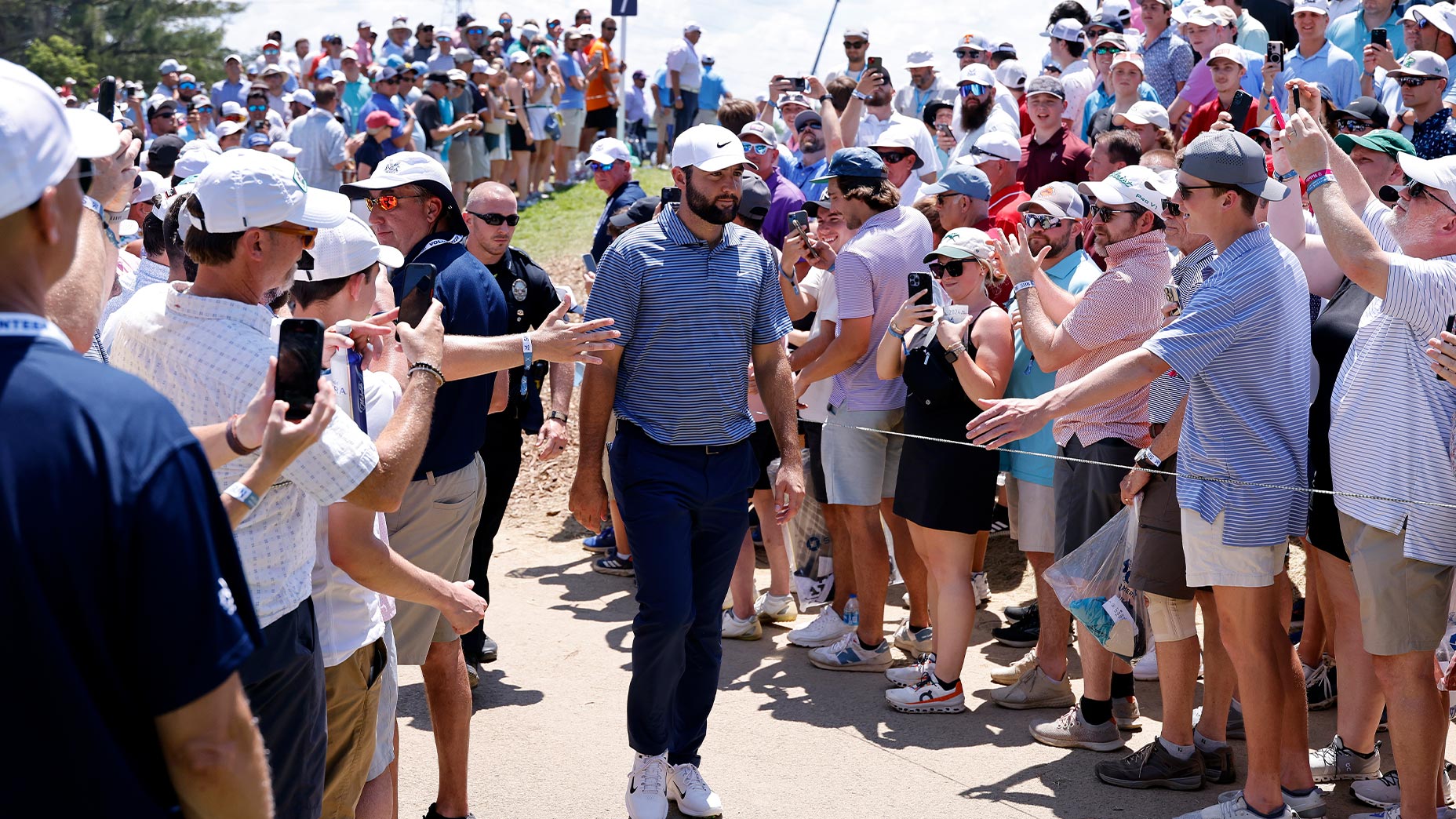Golf’s obsessed with TV ratings. But when do they actually matter?

When should you care about LIV Golf's TV ratings?
Getty Images
In his book, All Judges Are Political — Except When They’re Not, author Keith Bybee makes a daring claim: The American legal system hinges on the fact that it is not always fair.
“The rule of law is neither particularly fair nor free,” Bybee writes. “Yet it is durable and persists by reliably enlisting our interests.”
Bybee’s essential “hypocrisy” — that the law endures because it can be interpreted in inconsistent ways — is an ugly contention until you realize what it really means. Ultimately, Bybee argues, the strength of the law comes from the tension between impartiality and partiality. This tension allows the law to reflect the people it serves without losing all sense of fairness.
“Most people will not accept a bare-knuckled battle between interests without hint of objectivity,” he says. “Nor are most people capable of living up to a system that is strictly governed by principle.”
I’ve found myself thinking about Bybee a lot in the last 12 months, particularly in my work for GOLF’s media vertical, and I’ve begun to think his logic extends well into the strange world of TV viewership. You see, the truth is that all golf TV ratings matter … except when they don’t. They provide a guise of complete objectivity, but it doesn’t take very long to learn that things are not as they seem under the surface. In this world, as in Bybee’s, the truth has been altered to benefit the people it serves.
I’ve written about TV ratings plenty for the Hot Mic — who’s up, who’s down; who’s over the moon, who’s failing to report — and each time I’ve found myself struggling to answer the bigger question: what matters, and why?
Today, we try to answer that question (as best as one can answer it, at least). You can think of the below as my golf TV ratings rulebook — an assessment of which ratings stories are worth paying attention to, which numbers are worth noting, and which are little more than press release filler.
Here we go.
The Golf TV Ratings Rulebook
Masters ratings: Matter
If you’re hoping to learn something about the business of the Masters, you’re not going to get much from the ratings report. Augusta National sells limited advertising inventory to the same few legacy sponsors each year — an agreement that means it makes less money than it could from advertising. As such, ratings mean very little to those sponsors, who are, generally speaking, overjoyed to pay to associate their brand with a tournament of the Masters’ prestige.
That said, the Masters audience each year represents a key data point for the health of the sport writ large, much the same way that Super Bowl ratings reflect upon the NFL. Big swings in Masters ratings year-over-year are uncommon, but bumps and dips can be reflective of the state of the sport. (With the obvious caveat of weather-related or tournament-specific swings in viewership. Naturally, a Tiger victory will be better for business than a Patrick Reed win.)
For this reason, if you see a story about Masters ratings, it’s worth paying attention.
Week-to-week PGA Tour ratings: Generally don’t matter
Tempting as it may be to point to a 10 or even 20 percent drop or spike in ratings as evidence of broader success or failure, nobody on either side of the Tour’s TV deals cares all that much about viewership.
It’s helpful, of course, for the Tour’s audience to remain on par with recent years. But the truth is that the networks and the Tour are on the hook for $800ish million annually through the end of the decade whether the ratings go up or down. So long as these don’t go into freefall (40ish percent or more), you don’t actually need to care until it’s negotiation time for the next deal.
ESPN+ streaming ratings: REALLY don’t matter
ESPN+ is paying for the rights to the PGA Tour’s streaming product in order to maintain its subscriber growth. Viewership numbers mean nothing to them so long as the overall number of subscriptions on the platform remains high. (Still, it doesn’t hurt that the Tour has been its most-streamed product since the partnership began in 2022…)
LIV Golf TV ratings: Matter a lot (to LIV)
LIV has no long-term TV partner (its current partner, the CW, is signed only through the end of 2024), which means its viewership data is relevant to its ability to sign forthcoming rights agreements. The value of those agreements could hinge upon the league’s ability to show year-over-year or month-over-month growth in viewership, seeing as real positive trends could entice multiple bidders to enter the space. A positive ratings story could provide real-life leverage to LIV’s next TV deal, while a negative one could tank its value from the jump.
Of course, LIV has long since stopped reporting its weekly ratings on the CW after a series of early ratings dips. The league is reportedly on the verge of announcing yearlong numbers that will provide some context as to how 2023 went, but as with previous iterations of LIV viewership data, we’ll be watching with a close eye. In either case, though, if you’re a golf fan who has been paying attention to LIV, the TV story is worth your attention.
Ratings at the other majors (and the Presidents Cup/Ryder Cup): Don’t really matter
With the majors changing timezones and viewing windows almost every year, it’s hard to create an apples-to-apples comparison for major championship TV ratings. One year, a West Coast window might send viewership skyrocketing, while an early East Coast finish the next could send them plummeting.
Add in the fact that many of these properties are tied to long-term, ad-heavy TV contracts and you can feel comfortable knowing there isn’t much meat left on the bone.
Ratings when Tiger plays: Matter
The Tiger Bump is real, and the absence of that bump is a huge reason the 2019 TV rights agreements represents one of the biggest achievements of Jay Monahan’s PGA Tour leadership. Monahan and the networks signed those contracts knowing that ratings were likely to dip in the era without Tiger, so any week in which Woods decides to return to action represents a win for all parties.
I’m hardly the first to say this, but Woods’ staying power with TV audiences remains one of sports business’s most interesting and enduring stories.
Long-term ratings trends: Matter
It may be easy enough for the networks to claim a 1 percent bump year-over-year, but how does that stand against a 10-year trend in golf viewership? This is where the objective data (however it’s spun) becomes meaningful. Everyone wants to know where the sport — and the sports TV industry — is trending, and these kinds of longitudinal looks provide a better picture of the value of the overall product.
Golf TV will always be a valuable product, but will it always be worth the billions it’s claiming now? That’s where this data suddenly becomes incredibly meaningful.
Takeaways
It’s easy, too easy, to be distracted by shiny objects when reading and talking about golf TV ratings. Small trends in viewership (or no trends at all) can be misconstrued to tell a story that isn’t real. The objective truth is not always easy to find.
These inconsistencies should make you skeptical of what you hear. But with more and more dollars tied to the value of the audiences watching live sports, they’re also what keep the golf TV business going.


















